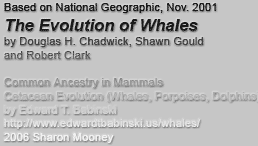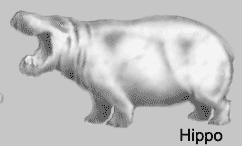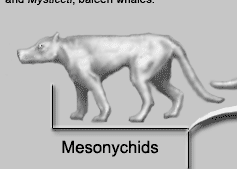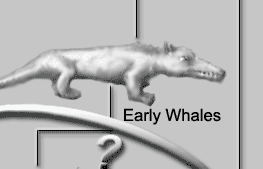Their work produced the first description and statistical tests of the pattern of change in brain size relative to body size in cetaceans over 47 million years. They found that encephalization level increased significantly in two critical phases in the evolution of odontocetes.
The first increase occurred with the origin of odontocetes from the ancestral group Archaeoceti nearly 39 million years ago, and was accompanied by both an increase in brain size and a decrease in body size. This change in encephalization occurred with the emergence of the first cetaceans to possess echolocation - the processing of high frequency acoustic information within a perceptual-communicative system used by modern dolphins and other odontocetes, Marino says. The second major change occurred in the origin of the superfamily Delphinoidea (oceanic dolphins, porpoises, belugas and narwhals) by about 15 million years ago. Both increases probably relate to changes in social ecology (the animals' social lifestyle) as well, Marino says.
In addition to their large brains, odontocetes have demonstrated behavioral faculties previously only ascribed to humans and, to some extent, other great apes. These abilities include mirror self-recognition, the comprehension of artificial, symbol-based communication systems and abstract concepts, and the learning and intergenerational transmission of behaviors that have been described as cultural.
Despite cognitive commonalities, the odontocete evolutionary pathway has proceeded under a very different set of independent circumstances from that of primates, Marino explains. The highly expanded brain size and behavioral abilities of odontocetes are, in a sense, convergently shared with humans, she says.
"Dolphin brains are four to five times larger for their body size when compared to another animal of similar size. In humans, the measure is seven times larger -- not a huge difference. Essentially, the brains of primates and cetaceans arrived at the same cognitive space while evolving along quite different paths" Marino says. "What the data say to me is that we, as humans, are not that special. Although we are highly encephalized, it's not by much or for that long compared with odontocetes."
Marino and her colleagues add that the observation that there is a single remaining human lineage "pruned down from a bushier tree" has led to a popular view that several species of highly encephalized animals cannot co-exist at the same time. "However, our results show that not only do multiple highly encephalized delphinoids coexist in similar and overlapping environments today, but this situation arose as early as 20 million years ago, and has persisted for at least 15 million years."
















